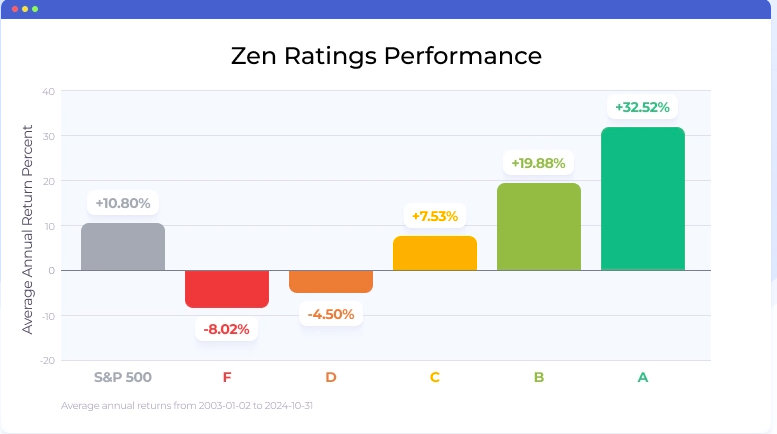20 Top Tips To Picking AI Stock Trading Analysis Websites
20 Top Tips To Picking AI Stock Trading Analysis Websites
Blog Article
Top 10 Suggestions On How To Evaluate The Strategy Customization Of Ai Trading Platforms
The ability to tailor the trading platform to meet your trading goals as well as your tolerance for risk and market conditions are an essential feature of AI-based stock prediction and analysis trading platforms. A platform that provides a wide range of customization options can improve the performance of your trading. Here are 10 tips to evaluate the flexibility of these platforms.
1. Evaluate Pre-Built Strategy Templates
Variety of Templates: Verify if the trading platform provides templates that are pre-built for various trading styles (e.g. Day Trading or Swing Trading, Long-Term Investment).
Usability: Consider the ease with which these templates could be altered to meet your specific needs.
Performance history: Make sure that the platform has historical data about performance for the strategic plans that have been pre-built.
2. Assess Customized Strategy Creation
Drag-anddrop tools: Look out for platforms that provide an intuitive drag and drop interface to allow you to personalize strategies.
Explore the coding options available on the platform. Advanced users might want to develop custom scripting languages (e.g. Python or R).
Flexibility - Make sure that the platform you select allows you to define rules for entry and exit, as well as parameters to manage risk, and other essential components of your strategic plan.
3. Check for Backtesting Capabilities
Historical data: Ensure that the platform has sufficient historical data available to backtest strategies.
Modifiable parameter: Make sure you can adjust parameters during backtesting (e.g. indicators and timeframes).
Performance metrics: Ensure that the platform provides detailed metrics of performance (e.g. Win rate Sharpe Ratio, Drawdown) in the back-testing of strategies.
4. Evaluate Real-Time Strategy Testing
Paper trading or simulation Check that the platform is compatible with paper trading that let you evaluate trading strategies in real-time and without putting your money at risk.
Live testing: Determine whether you're able to test your strategies on real-world markets with only a small amount of capital.
Real-time adjustments: Check to see if your strategy can be adjusted in real-time according to the market conditions.
5. Assess Integration with Technical Indicators
Check if there is an indicator library.
Custom indicators: Ensure that you can create or import custom indicators to implement in your strategies.
Combination of indicators Examine whether the platform allows combining multiple indicators to support more complex strategies.
6. Check for Risk Management Tools
Stop-loss/take-profit: Ensure the platform allows you to set stop-loss and take-profit levels within your strategies.
Position sizing: Find out whether you can establish rules for sizing positions (e.g. the amount that is fixed or percentage of the portfolio) to help manage risk.
Risk-reward Ratio: Verify that the platform supports setting individual risk-reward limits for strategies and trades.
7. Evaluate Multi-Asset Strategy Support
Asset classes: Make sure that the platform can help strategies across multiple asset categories (e.g. ETFs, stocks or options and forex).
Cross-assets strategies: Discover if you're able to design strategies that combine different asset classes.
Market coverage: Find out whether the platform has the services you require (e.g. US, international or cryptocurrencies).
8. Evaluate the automation and Execution
Automated trading. Check if the platform allows automated execution, based on previously defined strategies.
Order types: Determine whether your platform can handle different types of orders (e.g. market limit, limit, or stop) to carry out your the strategy.
Latency: Make sure that the platform is running at minimal latency for trading, particularly if you employ high-frequency strategies.
9. Check for Strategy Optimizing Tools
Parameter Optimization: Ensure that the platform has tools for optimizing the parameters of strategies (e.g. genetic algorithms, grid search).
Machine learning Integration: Determine if a platform integrates machine-learning to improve and refine strategy.
Scenario Analysis: Determine whether the platform can test strategies in different market scenarios (e.g. bull or bear and volatile).
Review User Support for Community Reviews and Feedback
User reviews: Examine feedback from customers to evaluate the platform's effectiveness for strategy personalization.
Forums for community members. Find out if the users are able to share and discuss their ideas within a lively and vibrant community.
Support resources - Ensure that the platform includes instructions and documents for users to develop and enhance strategies.
Bonus Tips
Trial period for free: You are able to test out the customization options of the platform by using an online demo or a trial period for free.
Scalability: The platform must be able to handle more complex trading strategies as you evolve.
Customer Support: Verify that the platform provides support for any strategy-related concerns or issues.
These tips will help you assess the options for customization of AI trading platforms which predict/analyze the performance of stocks. So, you'll be able to select one that is compatible with your goals in trading, and lets you improve and apply your strategies. A platform that offers many customization options will allow you to better adapt to market fluctuations and boost your trading performance. Take a look at the most popular using ai to trade stocks blog for blog advice including ai trading tools, options ai, ai stock trading, best ai for trading, best ai stock trading bot free, investment ai, ai for stock predictions, ai for investing, best ai trading software, trading with ai and more.
Top 10 Tips On Assessing The Trial And Flexibility Of Ai Analysis And Stock Prediction Platforms
To ensure that AI-driven stock trading and prediction platforms meet your needs, you should evaluate the trial options and flexibility before making a commitment to long-term. Here are the top 10 guidelines to take into consideration these factors.
1. Try it out for free
Tip: Check if the platform provides a free trial period to test its capabilities and performance.
Free trial: This gives users to test the platform without financial risk.
2. Limitations on the Duration and Limitations of Trials
Tips: Check the duration of your trial as well as any limitations that you may face (e.g. limited options, or access to data).
The reason: Once you understand the trial constraints and limitations, you can decide if it's a complete assessment.
3. No-Credit-Card Trials
Find trials that don't require credit cards to be paid in advance.
Why: This reduces the chance of unexpected charges and makes it simpler to cancel.
4. Flexible Subscription Plans
Tips: Find out whether the platform provides flexible subscription plans that have clearly established prices (e.g. monthly quarterly, annual).
Why flexible plans let you to pick the level of commitment that best suits your requirements and budget.
5. Customizable Features
See the possibility of modifying features such as warnings or levels of risk.
Why is this: Customization allows the platform to meet your goals in trading.
6. It is easy to cancel an appointment
Tip: Assess how easy it is to cancel or upgrade a subscription.
Why: In allowing you to unwind without hassle, you'll be able to stay out of the wrong plan for you.
7. Money-Back Guarantee
Look for platforms offering 30-day money-back assurance.
What is the reason? It offers a safety net in case the platform doesn't meet your expectations.
8. Access to Full Features During Trial
Be sure to check that you can access all features included in the trial version, not just a limited edition.
You will be able to make the right choice by testing the complete capabilities.
9. Support for Customer Service during Trial
Check out the customer service during the trial period.
What's the reason? Dependable support guarantees you can resolve issues and make the most of your trial experience.
10. Post-Trial Feedback Mechanism
Find out if the platform asks for feedback from users after the test to help improve its service.
Why? A platform that valuess the input of users is more likely to grow and meet the user's needs.
Bonus Tip Optional Scalability
The platform ought to be able to grow with your growing trading activity and offer you more expensive plans and/or additional features.
Before making any financial commitment, carefully evaluate these trial and flexibility options to determine if AI stock trading platforms and prediction are the best fit for you. Follow the recommended recommended reading on ai trading tool for more advice including ai stock prediction, ai software stocks, can ai predict stock market, ai trading tool, best ai penny stocks, ai copyright signals, ai in stock market, ai tools for trading, best ai stocks to buy now, investing with ai and more.